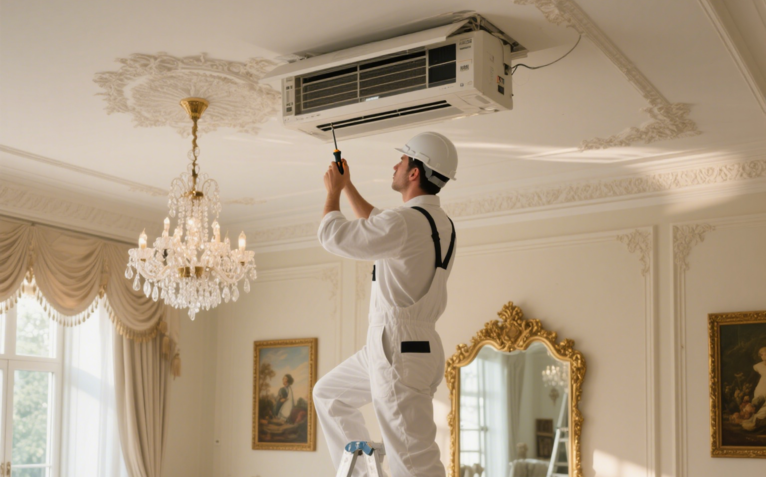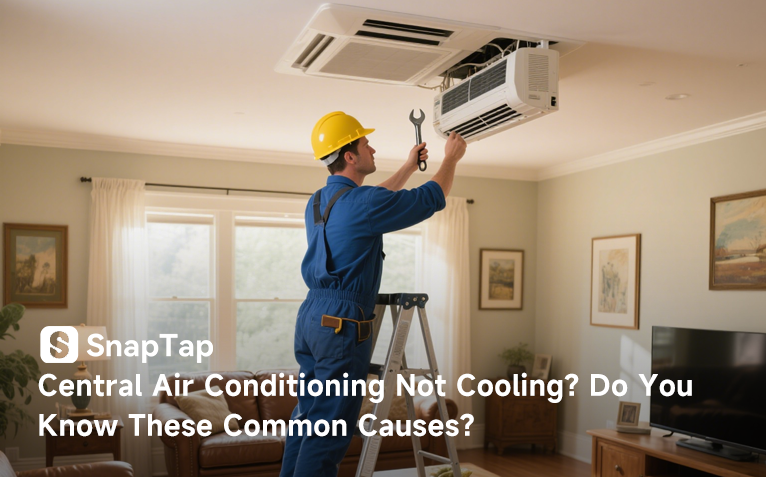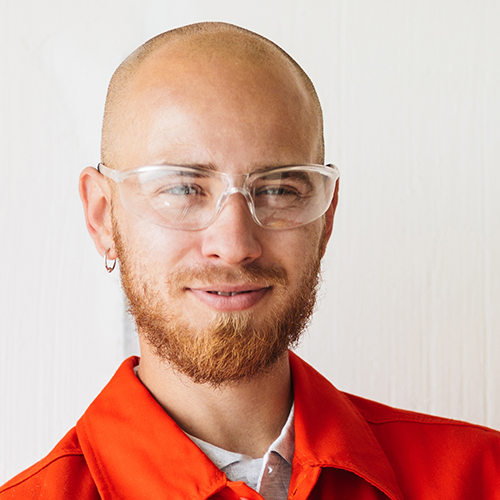In the scorching summer, it's a common and troublesome issue for many homes and offices when the central air conditioning doesn't cool properly. The air conditioning is running, the fan is blowing, but the cool air never seems to arrive. This problem not only affects comfort but may also indicate more serious system malfunctions. Understanding the common causes of air conditioning failure to cool, and mastering some simple troubleshooting steps, can help you make an initial air conditioning fault diagnosis and, when necessary, quickly decide whether to contact a central air conditioning repair service.
There are many reasons why central air conditioning might not cool, and one of the most common causes is refrigerant leakage. If the air conditioning system is low on refrigerant, the cooling cycle cannot proceed properly, and naturally, the system won't cool. Refrigerant leakage is often caused by system aging, loose joints, or pipe ruptures, and this issue requires professional technicians to use specialized detection tools. Another common problem is a clogged air filter. If the filter has not been cleaned for a long time, dust builds up, obstructing airflow. This not only reduces the cooling effect but can also deteriorate indoor air quality, thus impacting overall system efficiency.

Compressor failure is also one of the main causes of an air conditioner not cooling. As the core component of the central air conditioning system, the compressor is responsible for compressing low-temperature, low-pressure refrigerant into high-temperature, high-pressure gas. If it fails, the entire cooling process will be interrupted. Compressor failure is typically marked by abnormal running sounds, frequent circuit breaker trips, or no cool air being produced at all. Additionally, faults in the electrical control system or temperature sensors can also cause air conditioning malfunctions. For example, if the control panel is damaged, it might cause the system to misread the room temperature and fail to initiate cooling mode.
Before contacting a professional air conditioning repair service, users can perform some basic self-checks. First, check whether the air conditioning is set to cooling mode and ensure the temperature is set lower than the current room temperature. Sometimes, this is simply a setting error or remote control issue. You can also check if the air filter is heavily clogged and clean it to improve airflow and cooling efficiency. Additionally, observe whether the outdoor unit is running properly, and check if the fan is spinning smoothly or making any unusual sounds. If the air conditioning circuit trips or the power connection is loose, it can also prevent the system from starting. These are issues that users can inspect themselves.
However, if the issue persists after basic troubleshooting, it is advised not to attempt disassembling or adding refrigerant on your own. At this point, you should contact a professional central air conditioning repair technician for a fault diagnosis. Particularly when the system fails to cool after frequent starts, if there's leakage or icing, the compressor doesn't start, or there are unusual smells or electrical issues, the problem may be beyond what users can handle. Professional technicians have the necessary diagnostic tools and experience to accurately identify and fix underlying problems, preventing further damage caused by improper handling.
In conclusion, while central air conditioning not cooling is a common issue, the causes are not always straightforward. Timely fault diagnosis and repair not only restore a comfortable indoor environment but also extend the system's lifespan, preventing higher energy costs and repair expenses. If you're encountering this issue, it's advisable to first perform an initial check using the methods above and contact a professional repair service when needed to ensure your air conditioning system runs safely and efficiently throughout the summer.










